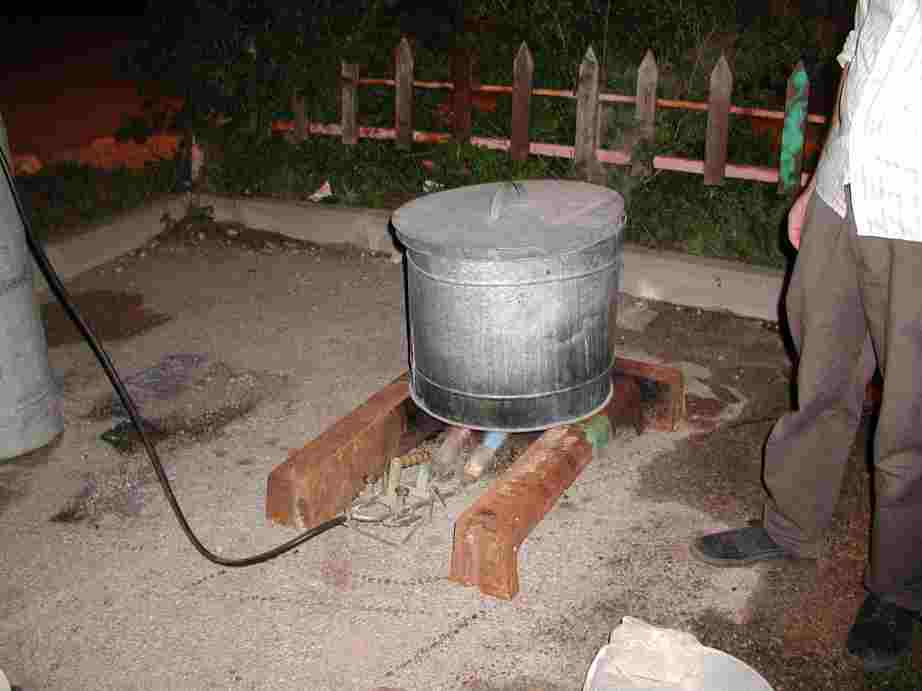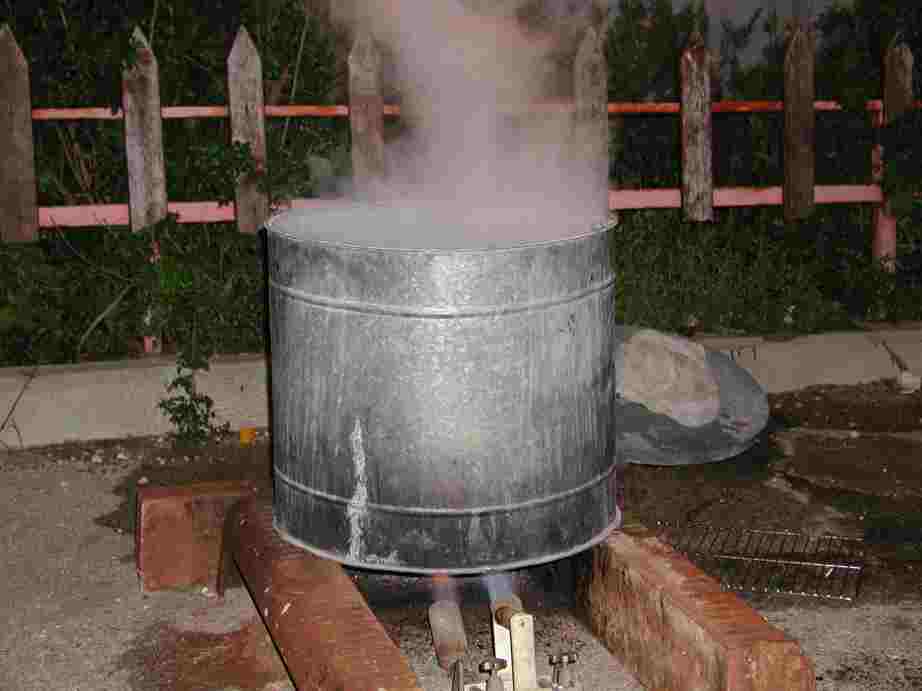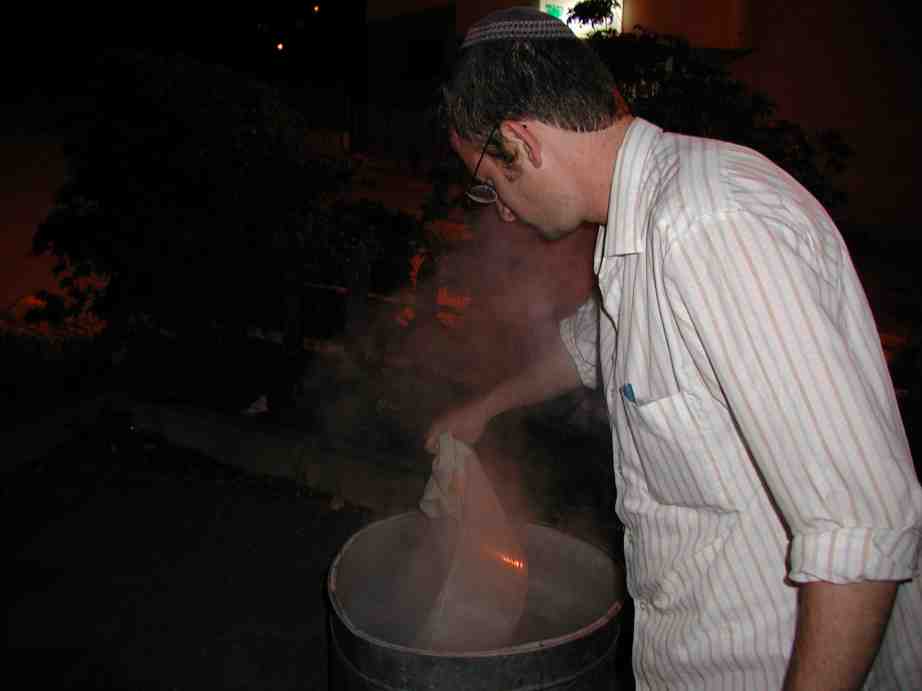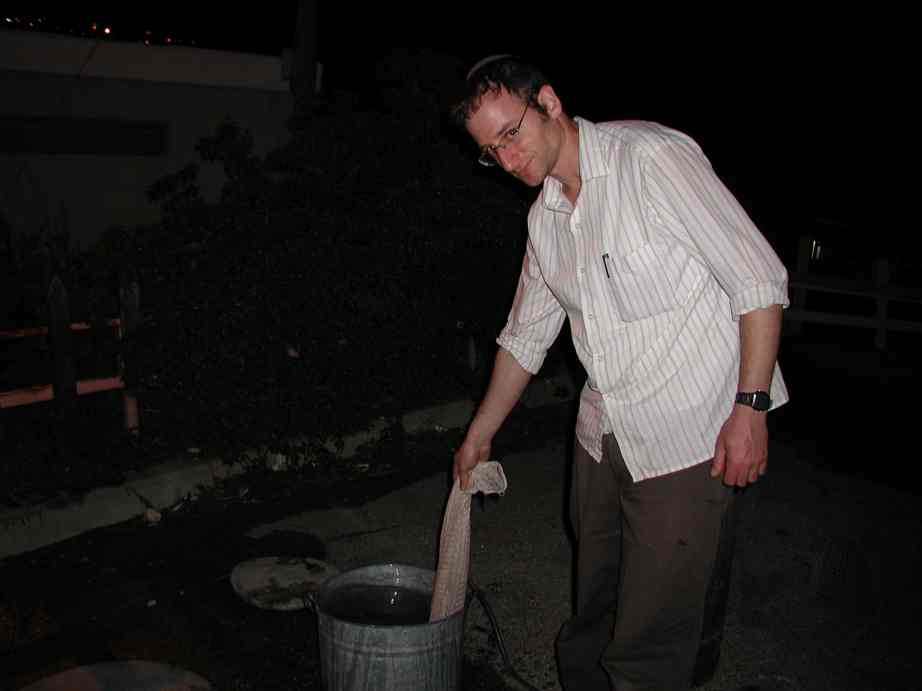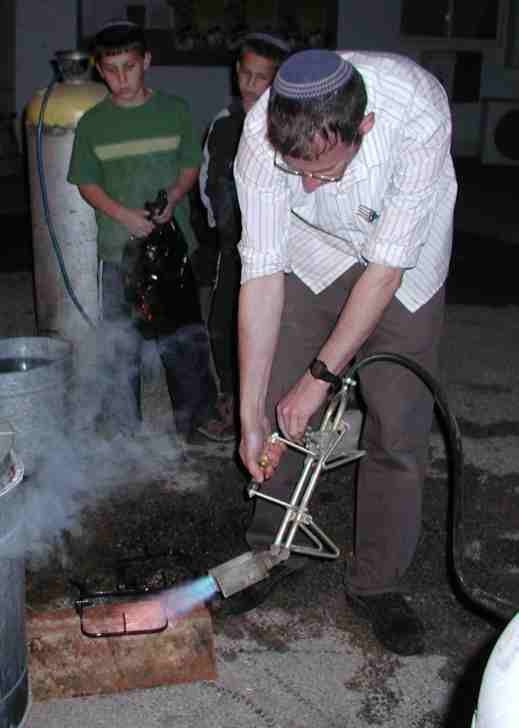
- Your questions
Shmone Esrei-tefila l kashrut l tevilat keilim l brachot l lashon hara l matza guide l guide to kashering utensils
- Torah on the web-
links for kids
- Rabbanim
Mechanchim - Program Overview
- Samples
- Educational materials
- Frequently asked questions
- Halacha Yomit topics
- More information
- How to order
- Order form
Parents - Review questions for the Shabbat
table
- Torah on the web-
links for parents
General - Participating schools
- Dedications
Kids

HAGALAT KEILIM
| The explanations on this page are meant only to teach basic concepts and awareness of the issues but should not serve anyone who wishes to kasher utensils as a guide. Many factors are involved in kashering, and an orthodox rabbi should be consulted for further details. |
|
Many people kasher utensils that were used for chametz, for use during Pesach Various methods of kashering utensils One method of kashering utensils is hagala- by placing them in boiling water After hagala, the utensils must be placed in cold water Another method of kashering is libun- heating the utensil at extreme temperatures Not all utensils can be kashered |
 |
|
Many people don't have enough Pesach utensil and which to be able to use some of their year-around pots, pans or other utensils on Pesach. In order to do so, these utensils must be kashered. In addition, utensils must be kashered if they become unkosher anytime during the year. For example, if one mistakenly cooked milk in his meat pots or the opposite, the utensils need to be kashered. The same is true if something that is not kosher was cooked in the utensils. |

Pots and pans
|
